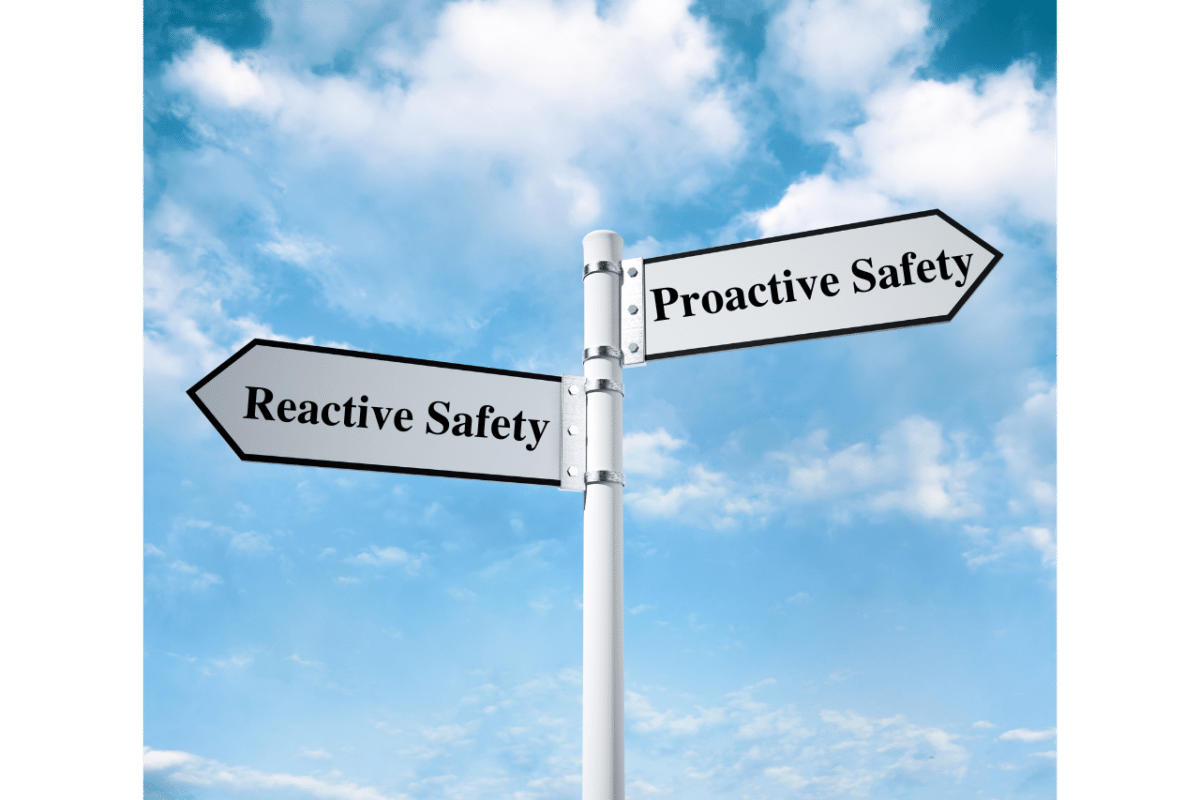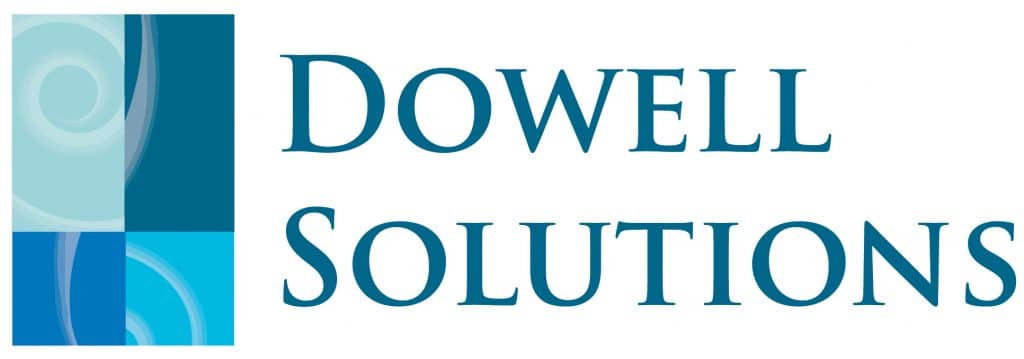In the arena of workplace safety, organisations often find themselves trapped in a cycle of reactive safety measures, not realising that they are overlooking the benefits of proactive strategies. Reactive safety measures such as incident investigations, hazard assessments, compliance checks and safety audits are all extremely important, however they address issues after they occur.

Understanding & Defining Reactive Safety Measures
Reactive safety measures are steps taken after an incident or accident has occurred. They are focused on responding to events often dictated by regulatory compliance and immediate necessity.
Such measures include conducting incident investigations to understand what went wrong, performing hazard assessments, post-incident and developing emergency response plans from lessons learned. Ensuring compliance checks to avoid future legal repercussions and carrying out safety audits to identify any breaches in protocol.
While these actions are essential for addressing safety concerns, they inherently lack the foresight of preventing incidents before they happen. By relying mainly on reactive measures organisations miss the opportunity to establish a robust culture of safety that proactively identifies and mitigates risks ultimately leading to a cycle of repeated incidents and potential harm to employees.
Five Common Reactive Safety Measures
Reactive safety measures are commonly implemented following an incident and include the following;
Incident Investigations
After an accident a thorough investigation is conducted to identify the cause and contributing factors. This involves examining the incident site interviewing witnesses and reviewing procedures.
Hazard Assessments
Organisations often reassess the workplace for hazards in the aftermath of an incident which can highlight previously overlooked risks.
Emergency Response Plans
Updating or creating emergency response procedures is a typical reaction to a safety incident aiming to better prepare for future emergencies.
Compliance Checks
Ensuring that practices align with safety regulations is crucial and compliance checks post-incident help to correct deviations from required standards.
Safety Audits
Conducted after an incident safety audits evaluate the effectiveness of safety programs and identify areas for improvement.
These measures while necessary, stress a response to harm rather than prevention.
A proactive approach can reduce the likelihood of such incidents occurring in the first place.
The Drawbacks of Reactive Safety
The main drawback of reactive safety measures is that they occur after an incident, which means harm has already been done. This approach can result in a cycle of continuous response that fails to address the root causes of safety issues.
Reactive safety is generally more costly in the long term as incidents can lead to financial losses from halted production, workers’ compensation claims and potential legal fees.
Another significant disadvantage is the impact on employee morale as workers may feel less valued if they perceive that their safety is only addressed after something goes wrong. This can affect productivity and job satisfaction leading to higher turnover rates.
Lastly relying on reactive safety measures can damage a company’s reputation, as frequent incidents suggest a lack of control and responsibility which can deter potential clients and partners, negatively affecting the business’s growth and success.
The Need for Proactive Safety Strategies
Shifting from reactive to proactive safety strategies is essential for creating a safer work environment. Proactive safety involves identifying potential hazards and risks before they lead to incidents, thereby preventing harm and maintaining continuous operations.
This approach not only protects employees but also reduces costs associated with accidents and ensures compliance with safety legislation.
Proactive safety strategies include
- regular risk assessments,
- employee safety training programs,
- the adoption of safety-enhancing technologies and
- adopting systems aligned with standards such as AS/NZS ISO 45001.
By investing in these measures’ organisations demonstrate a commitment to the well-being of their staff which can boost morale and productivity.
Additionally a proactive stance on safety can enhance a company’s reputation positioning it as an industry leader concerned with best practices and employee welfare. This in turn can attract top talent and foster trust with clients and stakeholders.
The switch to proactive safety is not just a moral essential but also a strategic business move.
According to Safe Work Australia’s National Work Health and Safety Strategy 2023–2033, proactive safety strategies can significantly reduce workplace injuries and fatalities by promoting risk management and early intervention.
The Impact of Proactive Safety Measures
Proactive safety measures have a profound impact on the workplace. They contribute to creating an environment where safety is integrated into every aspect of the business from the ground up.
By focusing efforts on prevention, organisations can significantly reduce the number of incidents and near- misses. This proactive approach often leads to a more engaged workforce as employees feel their safety is genuinely prioritised.
Implementing such measures also allows businesses to identify inefficiencies and areas for improvement that might not be obvious until an incident occurs. For example through regular risk assessments and safety training employees become more aware of potential hazards which can lead to innovative solutions and improvements in operational procedures.
Proactive safety measures can also lead to reduced insurance premiums and fewer financial losses associated with accidents and their aftermath.
This strategic focus on prevention rather than reaction not only saves costs, it also enhances the overall safety culture within an organisation.

ABOUT THE Author - Kylie Dowell
Kylie Dowell is a seasoned WHS consultant, trainer, and safety advocate with over 25 years of experience helping Australian businesses create safer, compliant workplaces.
Through her partnership with TEAMS, an accredited Registered Training Organisation, Kylie delivers a wide range of training up to Advanced Diploma level, empowering businesses with the knowledge and skills to manage safety effectively.
As an approved trainer for Health and Safety Representative (HSR) courses by three Safety Regulators, Kylie has guided countless organisations in building stronger safety cultures and fostering healthier work environments.
Specialising in practical and effective safety solutions, she works closely with small and medium-sized businesses to simplify complex WHS requirements, making safety approachable and achievable.
When she’s not delivering high-quality training or conducting ISO 45001-certified audits, Kylie enjoys collaborating with her clients to design tailored workshops and strategies that suit their unique needs.
Ready to make safety simpler? Get in touch with Kylie today for personalised support.
